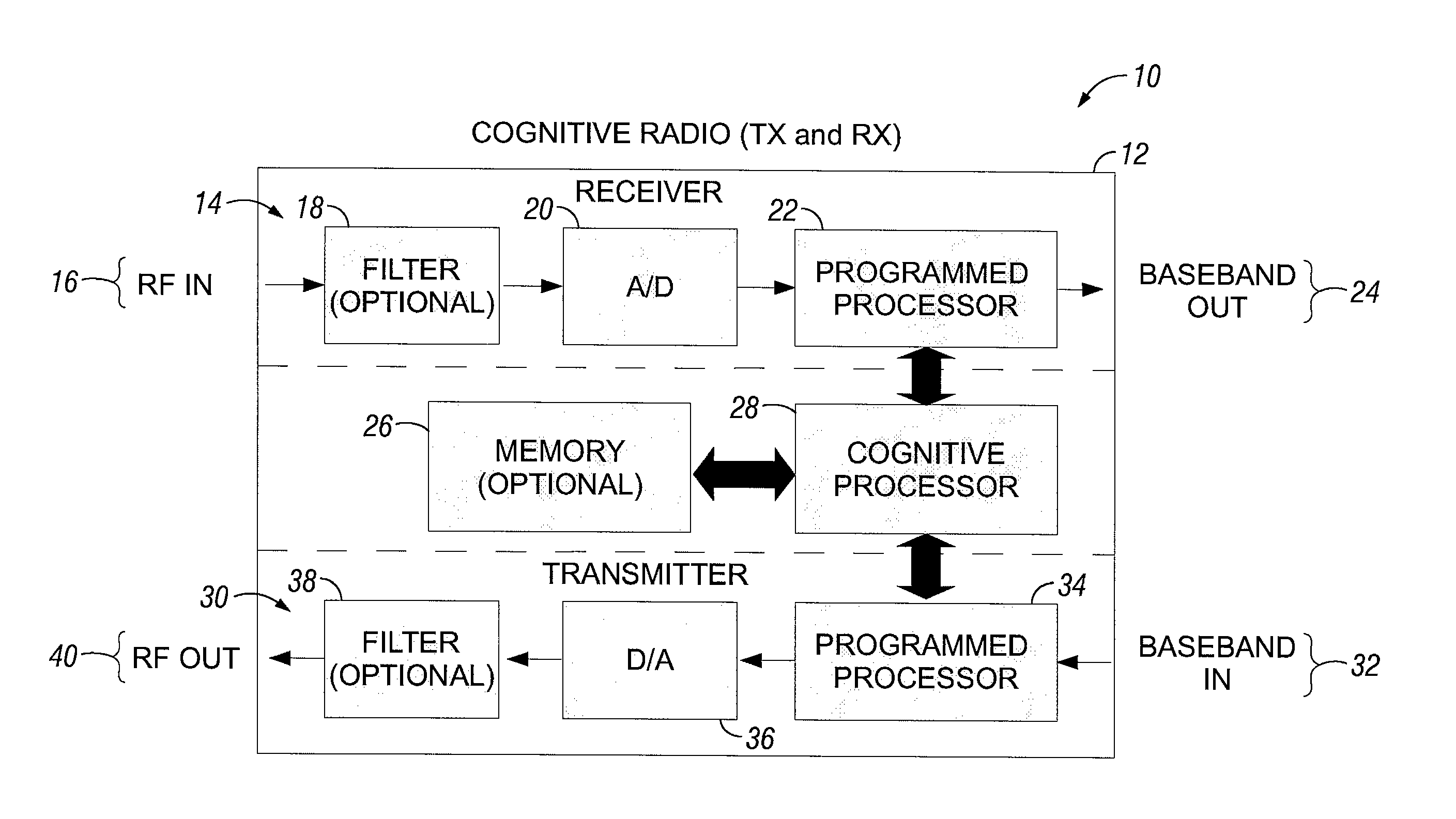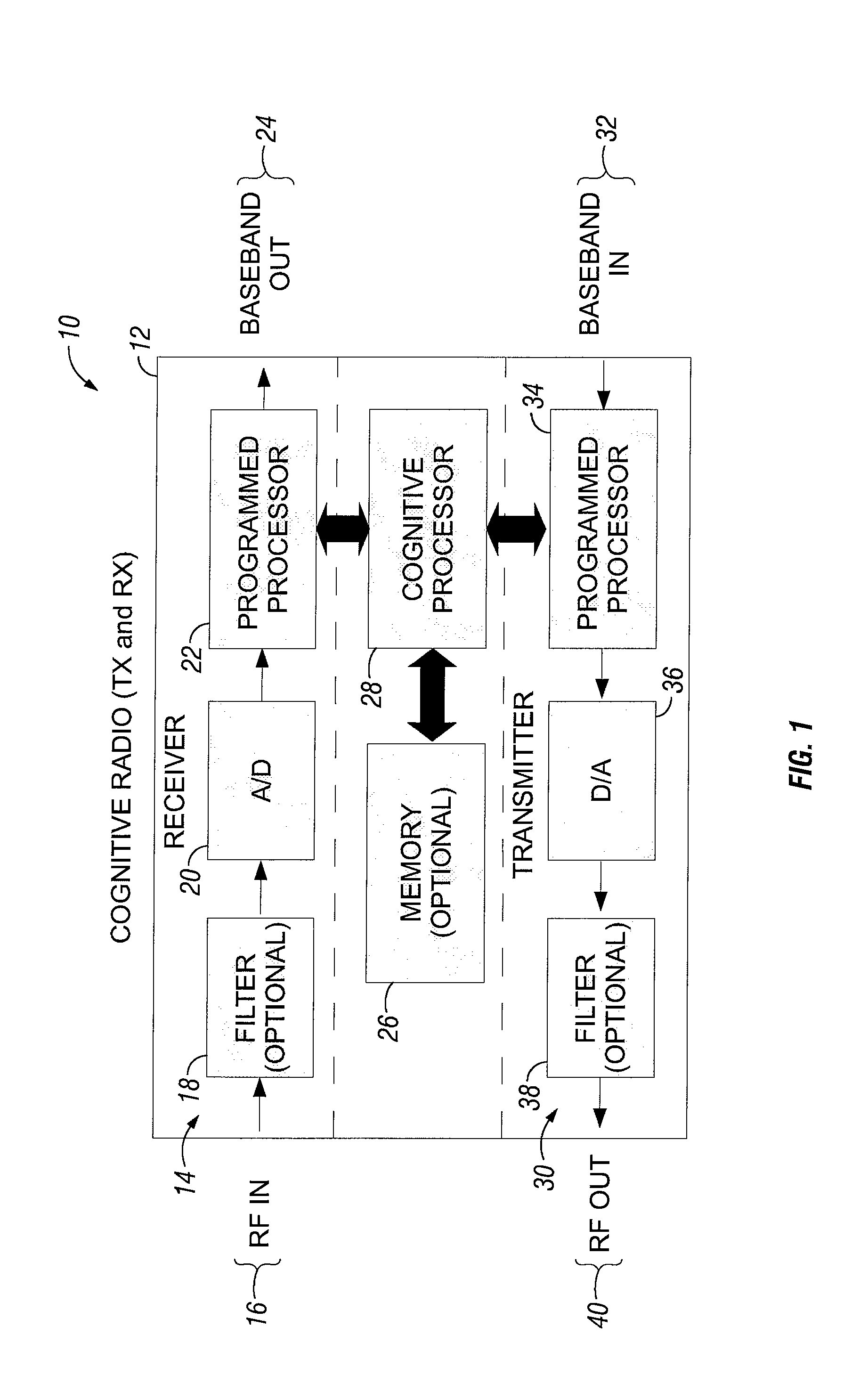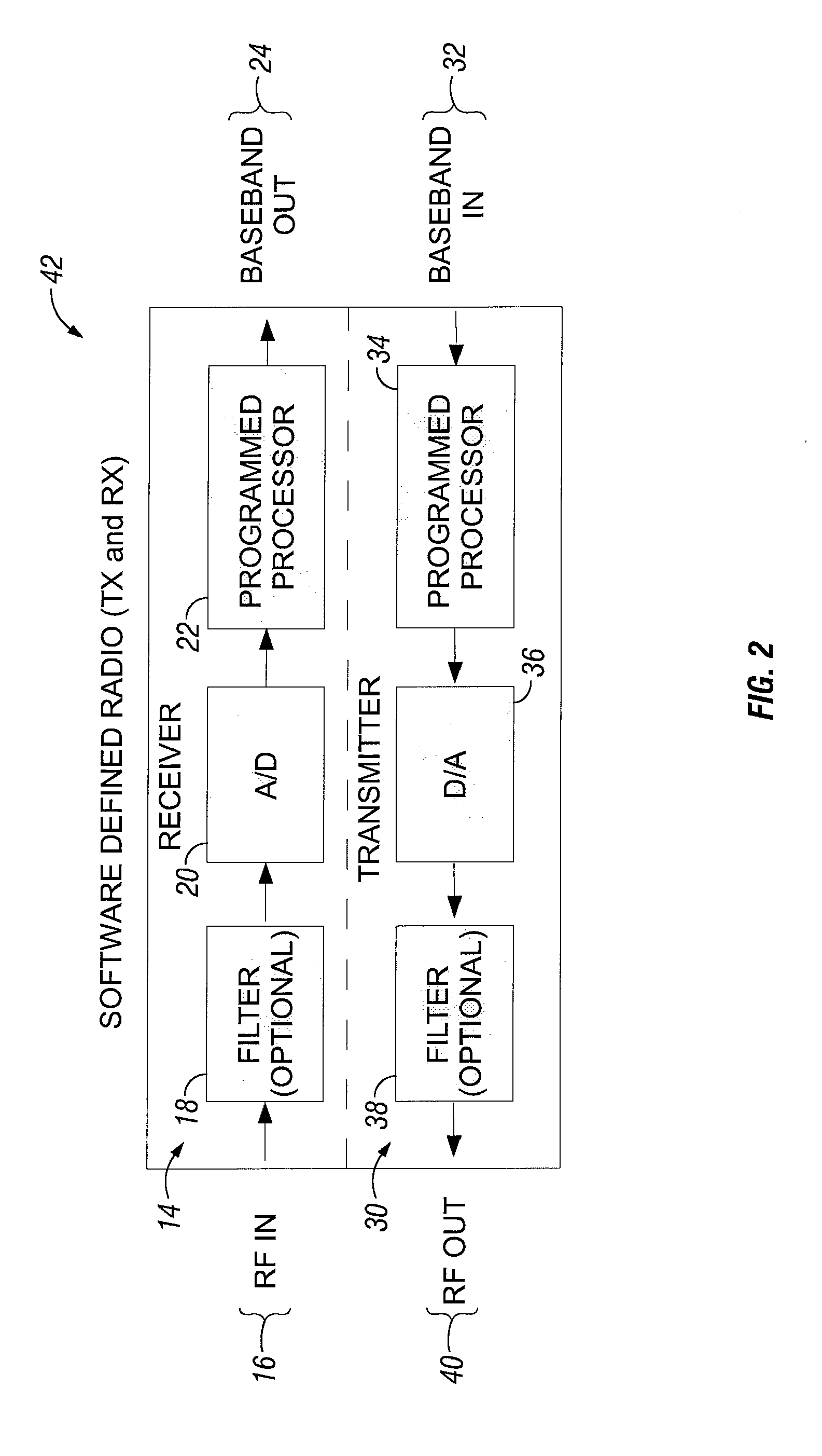Spread spectrum communications using complex chip sequences
- Summary
- Abstract
- Description
- Claims
- Application Information
AI Technical Summary
Benefits of technology
Problems solved by technology
Method used
Image
Examples
Embodiment Construction
[0029]FIG. 1 illustrates one embodiment of a cognitive radio that performs both transmit and receive functions. The cognitive radio 10 may have a housing 12. Disposed within the housing 12 is a receiver 14 and a transmitter 30. A radio frequency input signal 16 is received and communicated to an optional filter 18. The resulting filtered signal (where a filter is used) is received at an analog-to-digital converter 20. After the conversion, the resulting signal is communicated to a programmed processor 22. The programmed processor 22 may generate a baseband output. The programmed processor 22 is in operative communication with a cognitive processor 28 which may be operatively connected to an optional memory 26. In the transmitter 30, a programmed processor 34 receives a baseband signal 32 as input. The programmed processor 34 is operatively connected to a digital-to-analog converter 36. The analog signal produced by the digital-to-analog converter 36 may be output through an optional...
PUM
 Login to View More
Login to View More Abstract
Description
Claims
Application Information
 Login to View More
Login to View More - R&D
- Intellectual Property
- Life Sciences
- Materials
- Tech Scout
- Unparalleled Data Quality
- Higher Quality Content
- 60% Fewer Hallucinations
Browse by: Latest US Patents, China's latest patents, Technical Efficacy Thesaurus, Application Domain, Technology Topic, Popular Technical Reports.
© 2025 PatSnap. All rights reserved.Legal|Privacy policy|Modern Slavery Act Transparency Statement|Sitemap|About US| Contact US: help@patsnap.com



